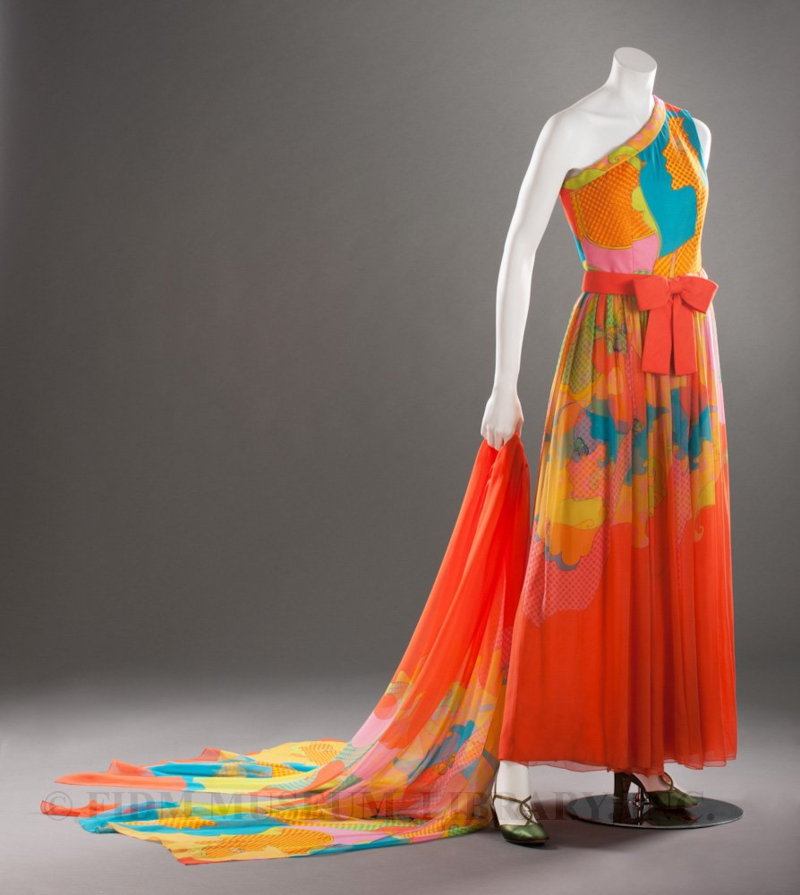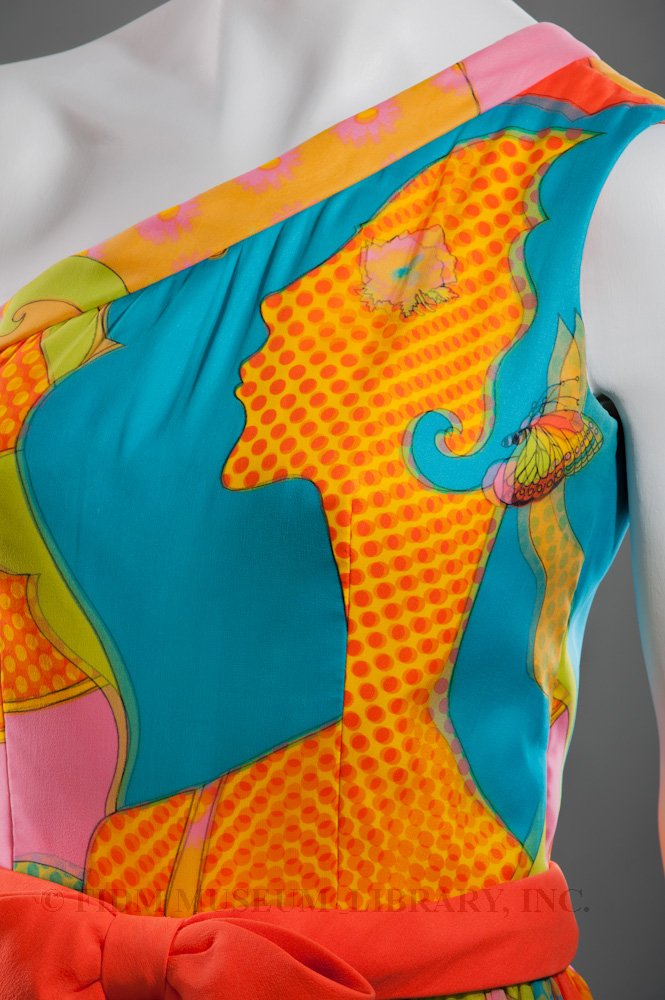Hanae Mori jumpsuit, late 1960s
 Evening Jumpsuit Ensemble
Evening Jumpsuit Ensemble
Hanae Mori
c. 1968-1970
Printed silk twill, printed silk crepe, silk crepe
Gift of Anonymous Donor
2012.40.9AB
By 1965, when Hanae Mori (b. 1926) first showed her designs outside of her native Japan, she was already a tremendous success at home. She had five retail outlets in Tokyo, including a salon for custom designs, branch stores throughout Japan, seven factories manufacturing ready-to-wear, a weekly column in a major newspaper, and a twice monthly television show. Mori also had extensive experience designing costumes for films; during the 1950s, she created costumes for over three-hundred Japanese films.
Mori traveled to New York in early 1965, arriving with a small entourage and sixty-eight original designs. She presented a collection of "simple, straight silhouettes executed in extraordinary printed silks, most of which she [designed] herself."1 Fashion critics noted her sophisticated, modern combinations of Japanese elements (obi belts, Japanese-style prints) with Western garment forms. Later Mori designs would include evening gowns patterned with Japanese calligraphy, stylized kimono evening gowns of embroidered satin, and dresses with the long furi-sode (swinging) sleeves usually featured in young women's kimono. This successful merging of Eastern and Western clothing traditions was a hallmark of Mori's aesthetic.
Unlike the Japanese designers who rose to fame in the 1980s, Hanae Mori had no interest in challenging the fashion establishment. She worked within the traditions of Western fashion, with a particular interest in the detailed, labor-intensive work of the haute couture. In 1977, Mori became the first Japanese member of the Chambre Syndicale de la Couture Parisienne, the organization that regulates the haute couture industry. In 2004, Hanae Mori presented her last haute couture collection.
The psychedelic pattern of this Hanae Mori jumpsuit perfectly suits the late 1960s mood. Bright, swirling colors coalesce into a pattern of fluttering butterflies and flower-eyed women. Butterflies were a signature motif for Mori, appearing frequently in her designs. This jumpsuit is formed with layers of patterned chiffon, slightly offset to create additional depth and texture. These same layers mask the wide, palazzo-style legs of the jumpsuit. In the image below, the slight offset of the bodice layers creates a psychedelic blurring of the polka dot pattern. Layer the matching wrap over this jumpsuit, and the vivid pattern would become a swirl of indecipherable images and colors.
1 Bender, Marilyn. "Western-Style Clothes Are Designed in Japan." New York Times ( Jan 7, 1965) 35.
2 Ibid.
